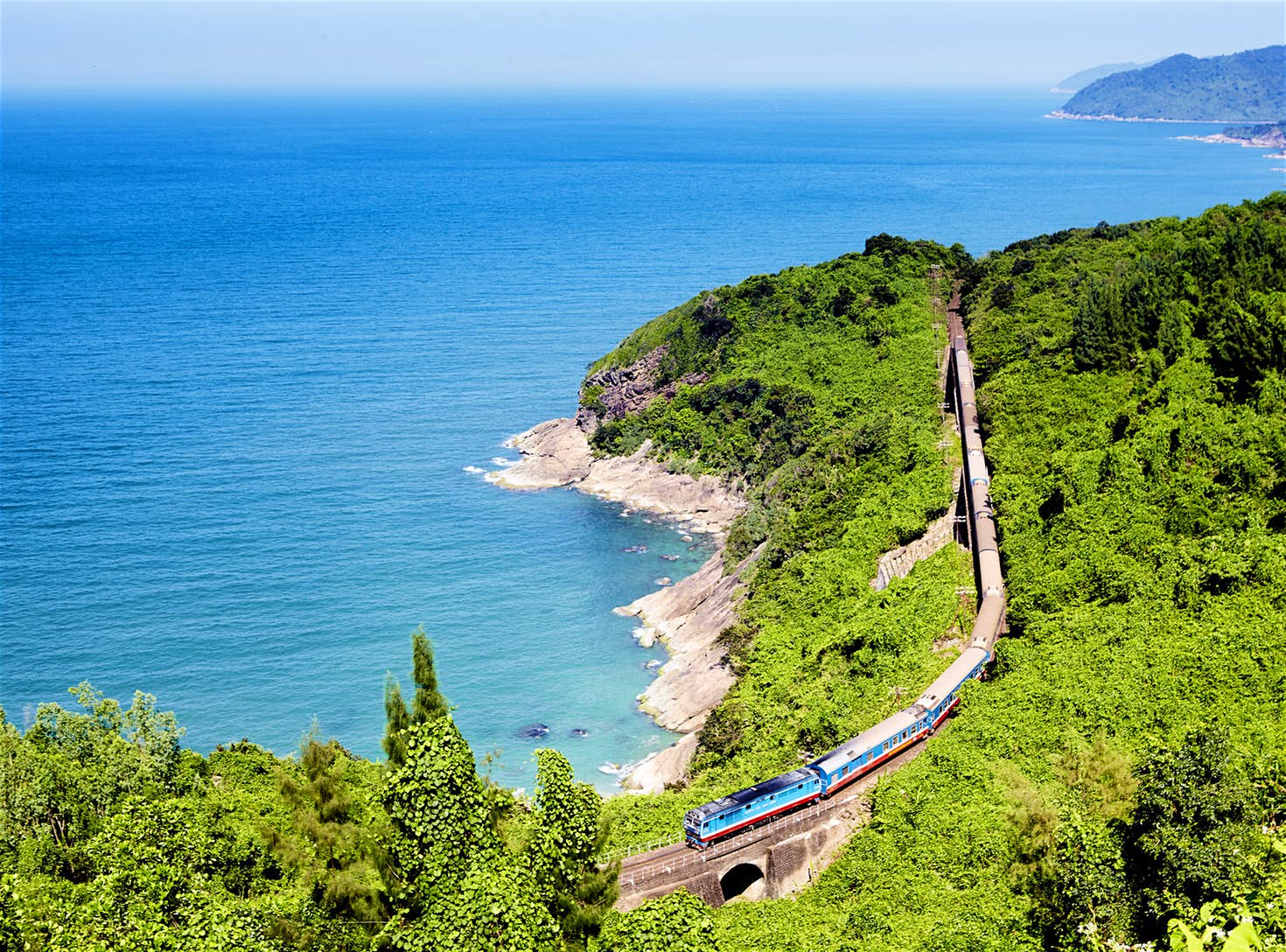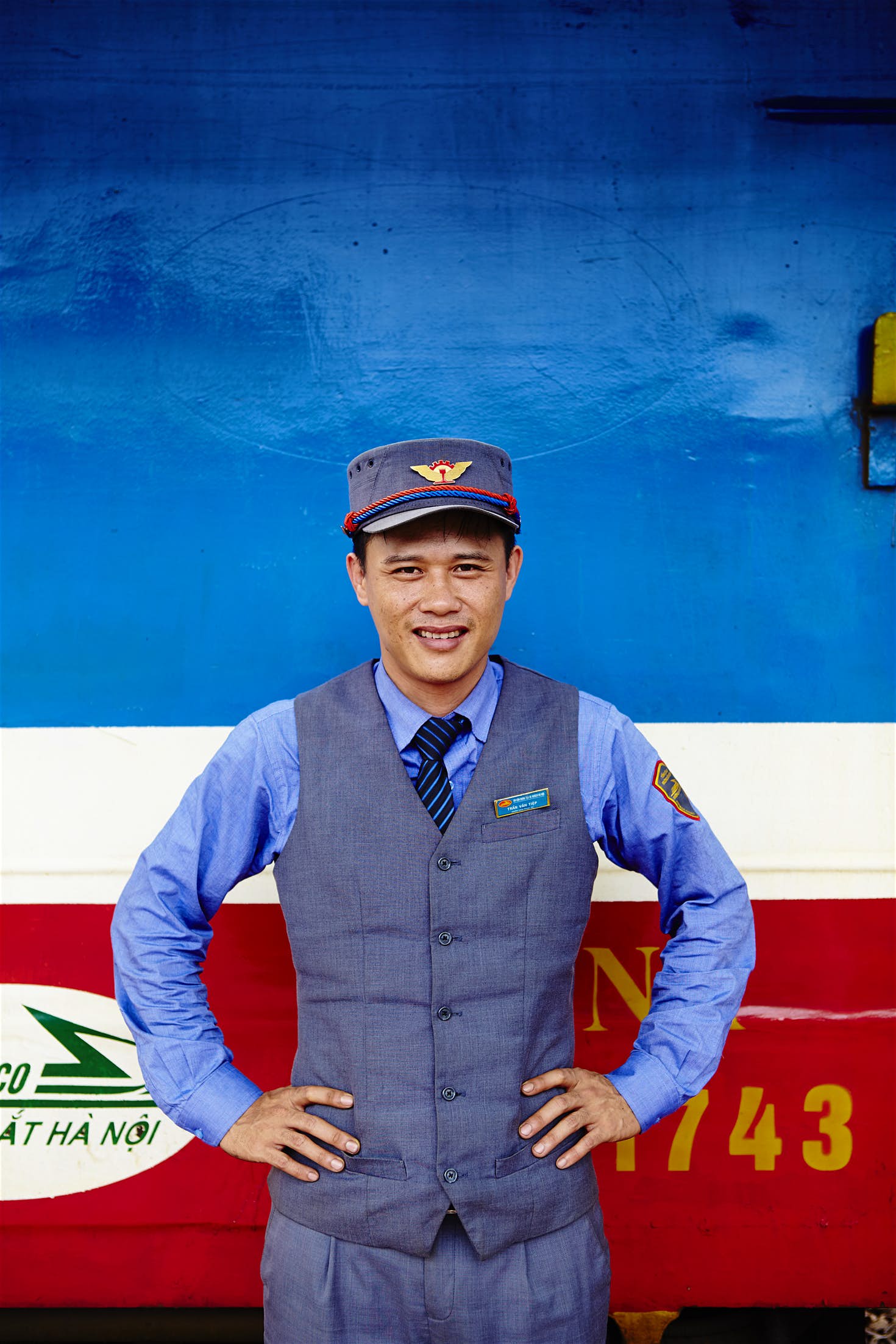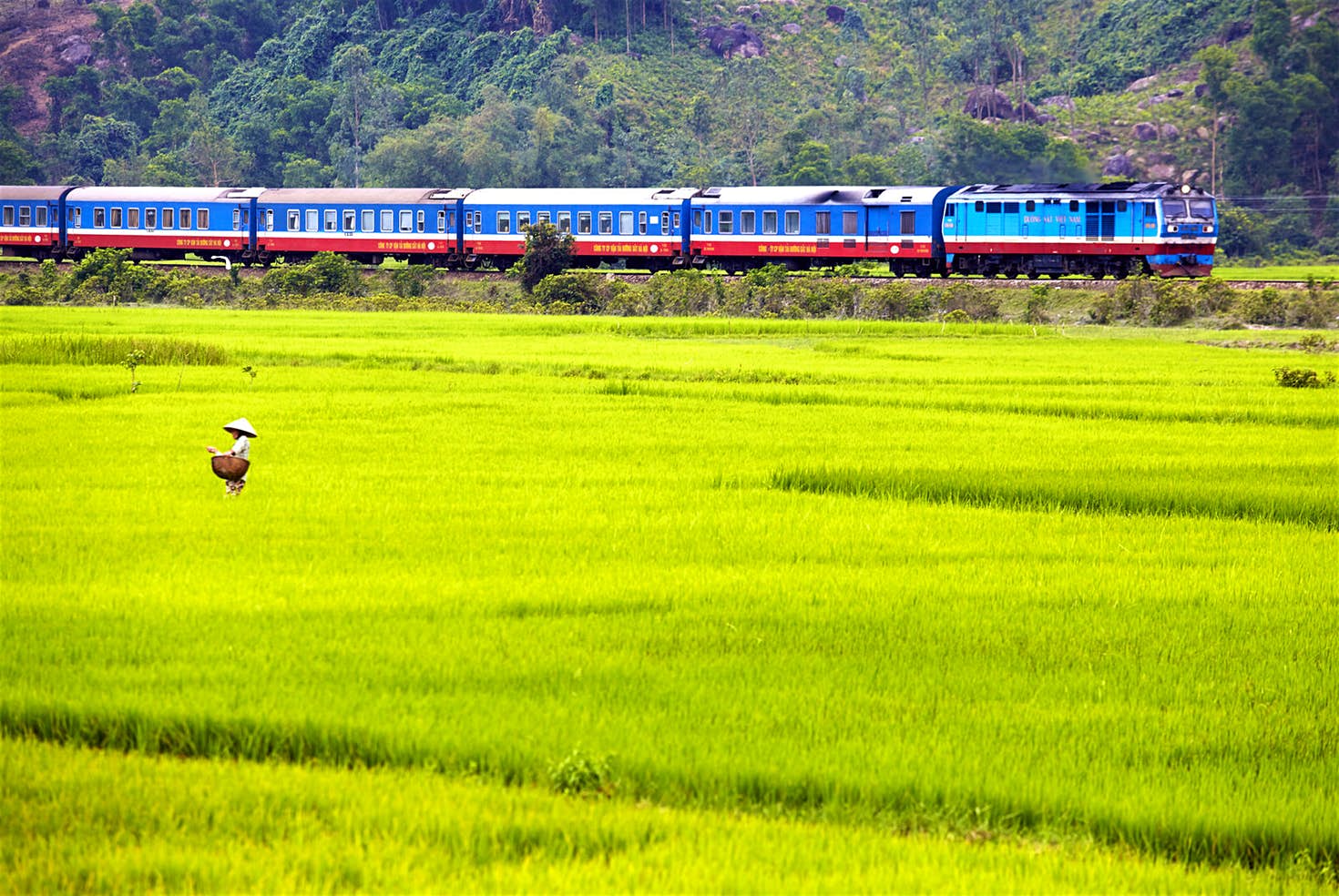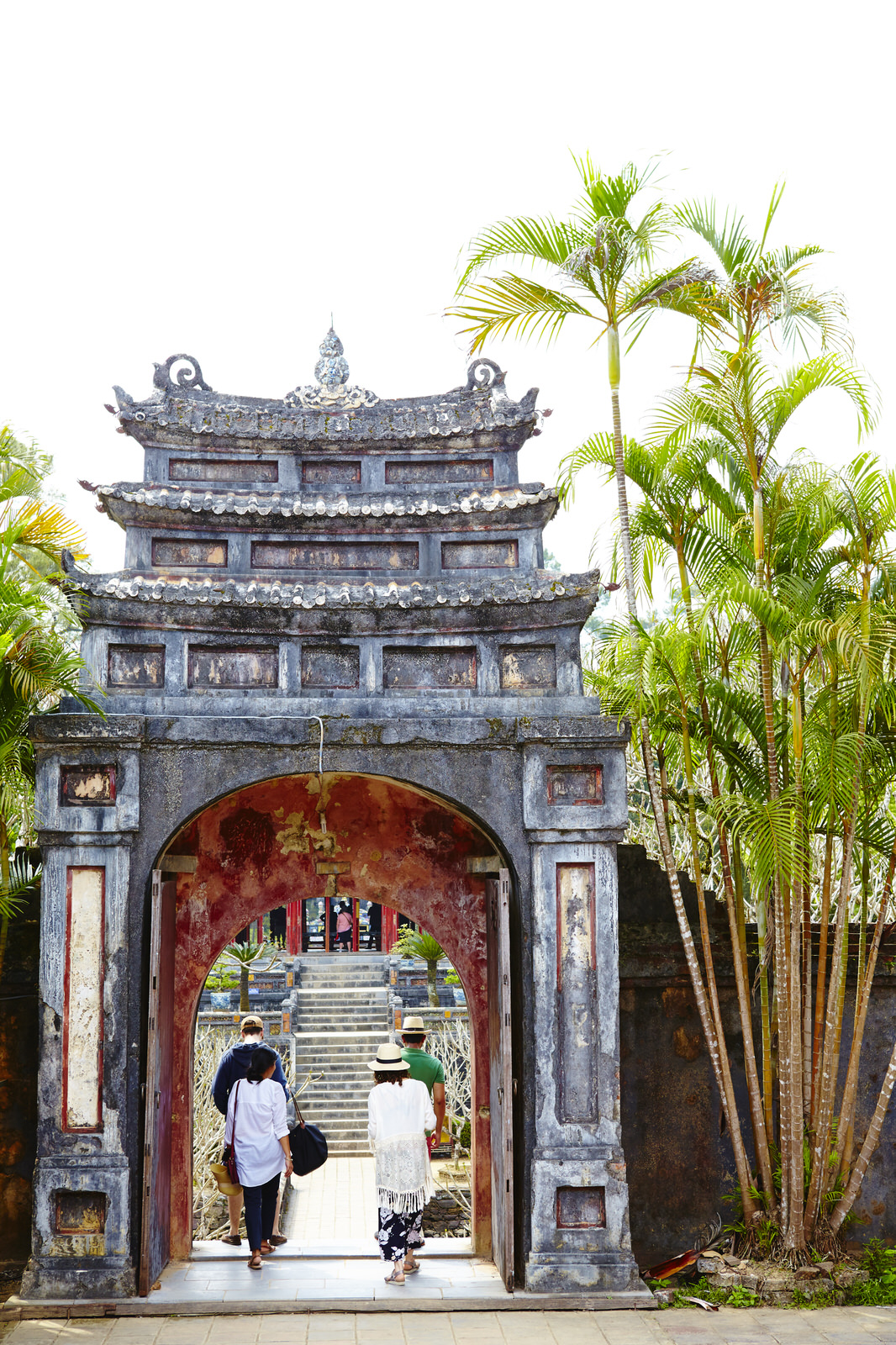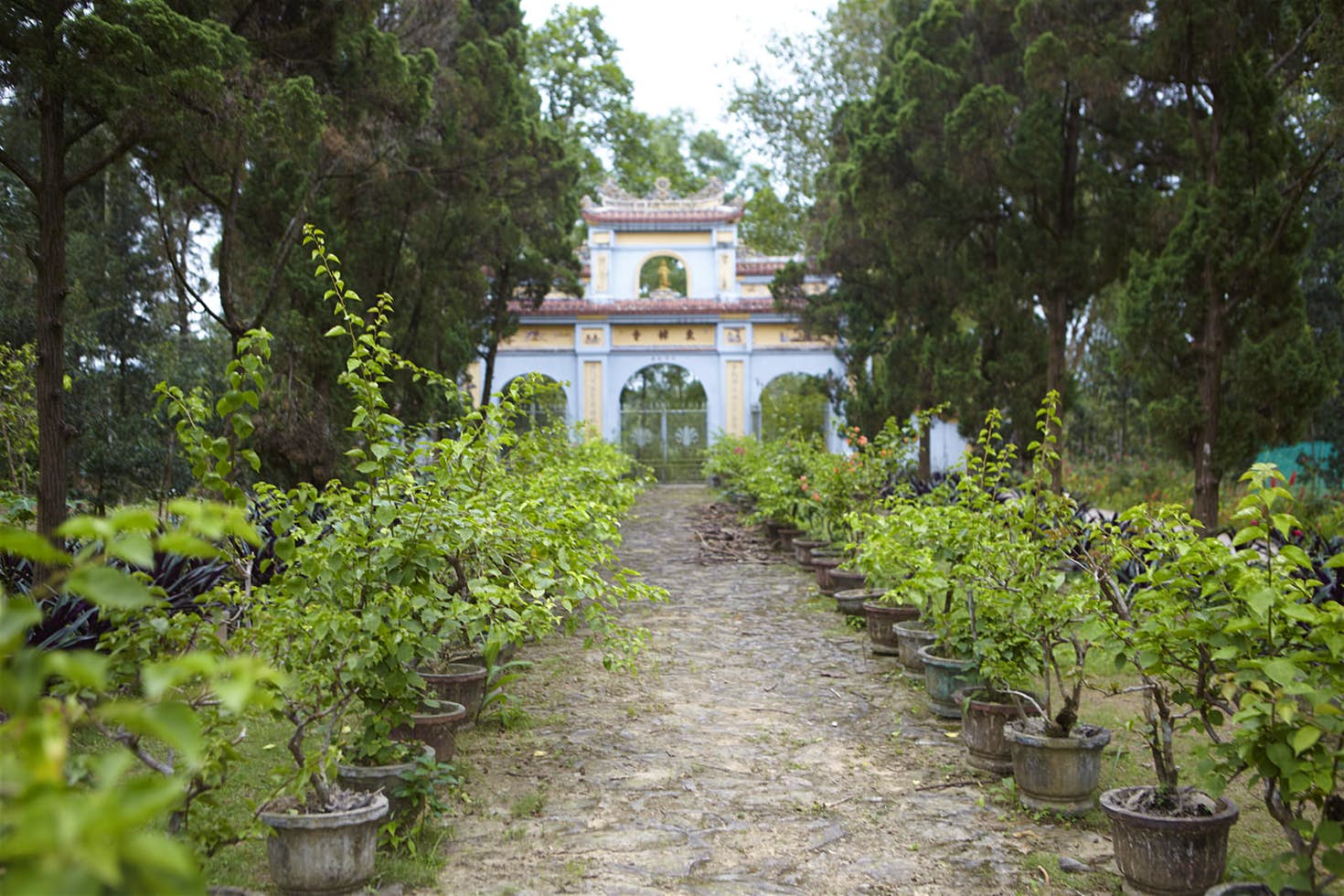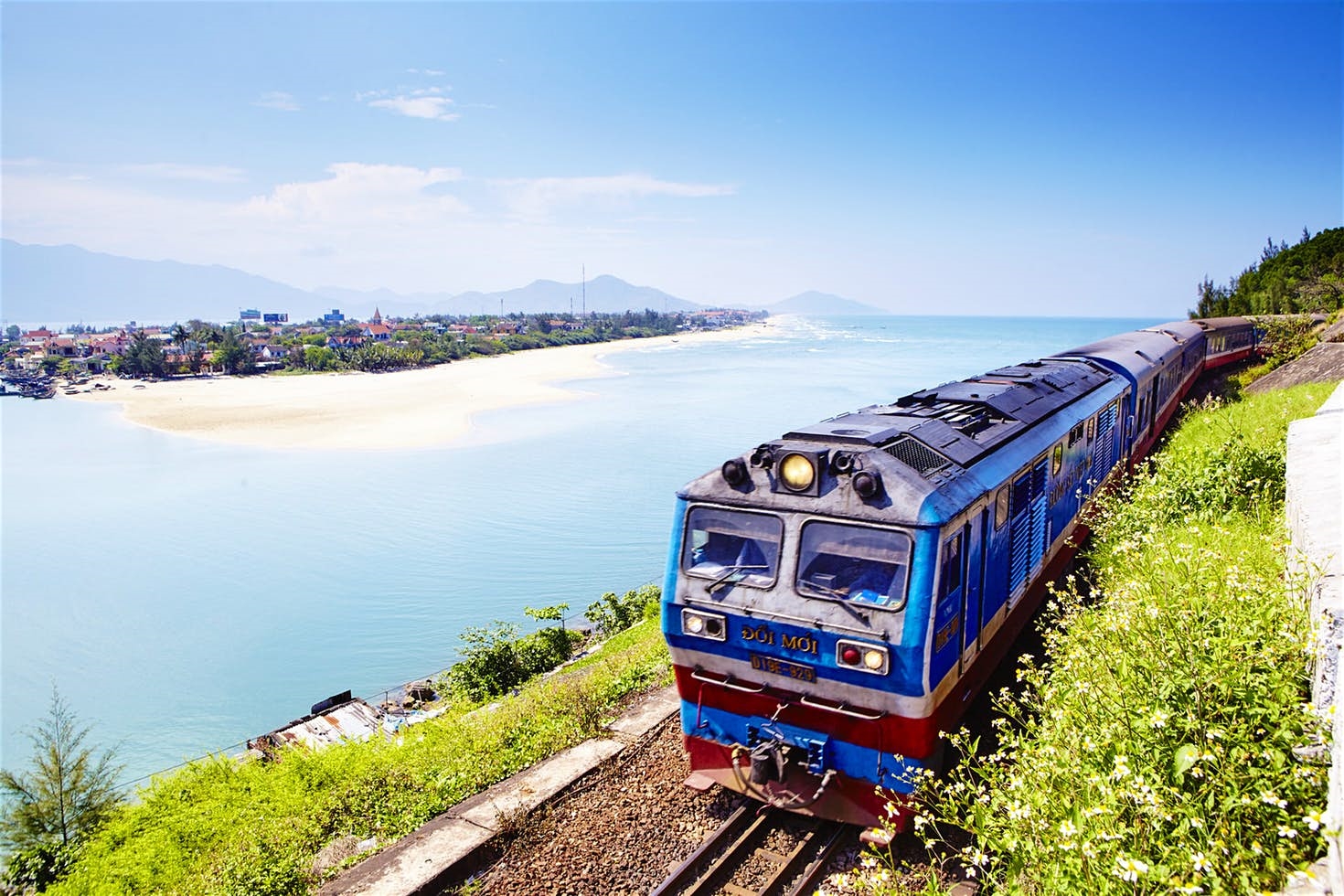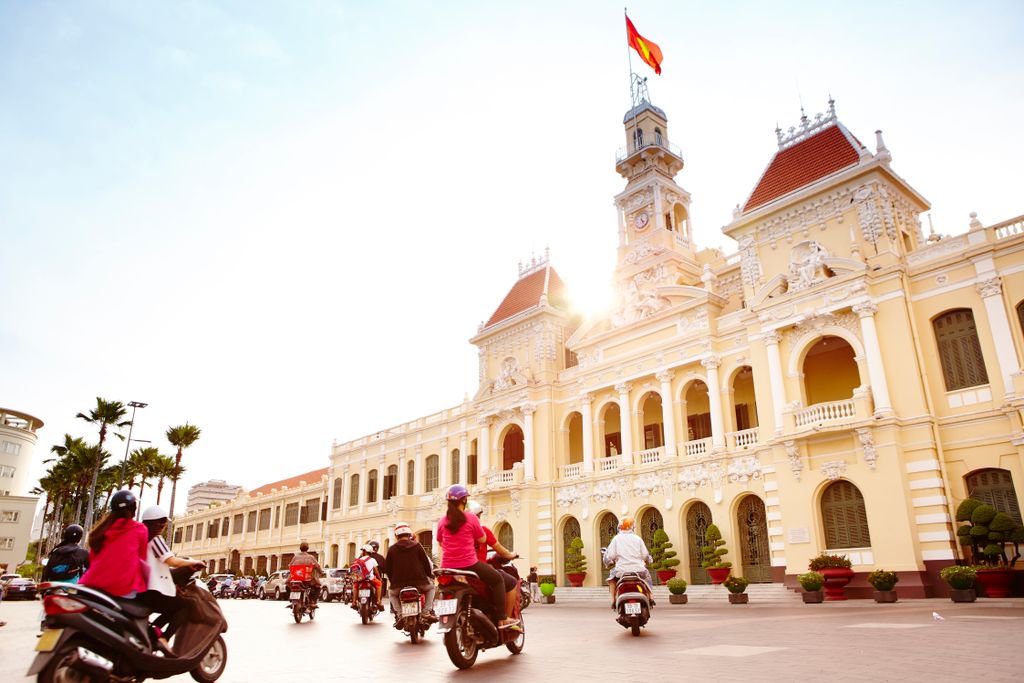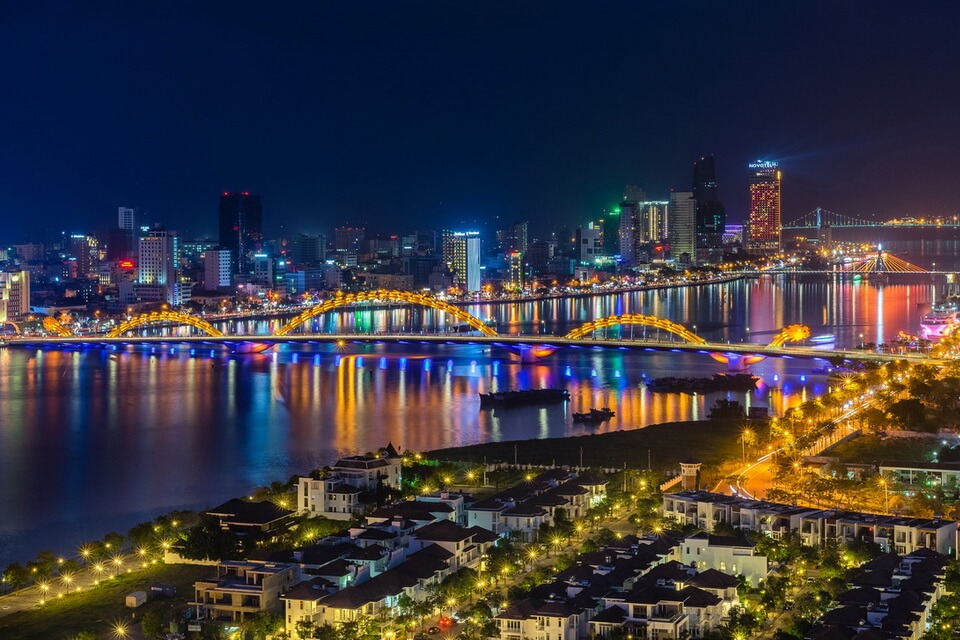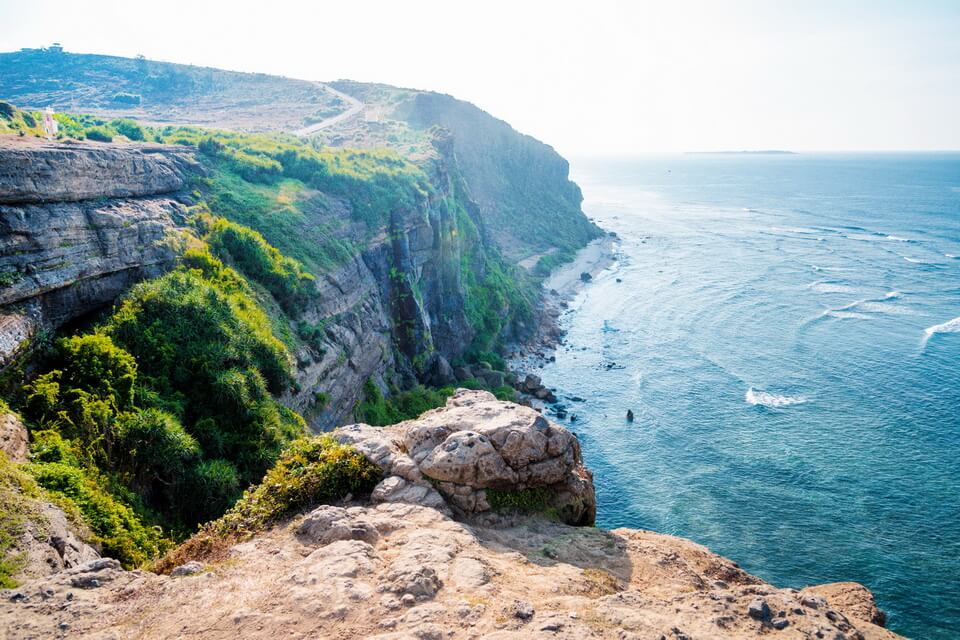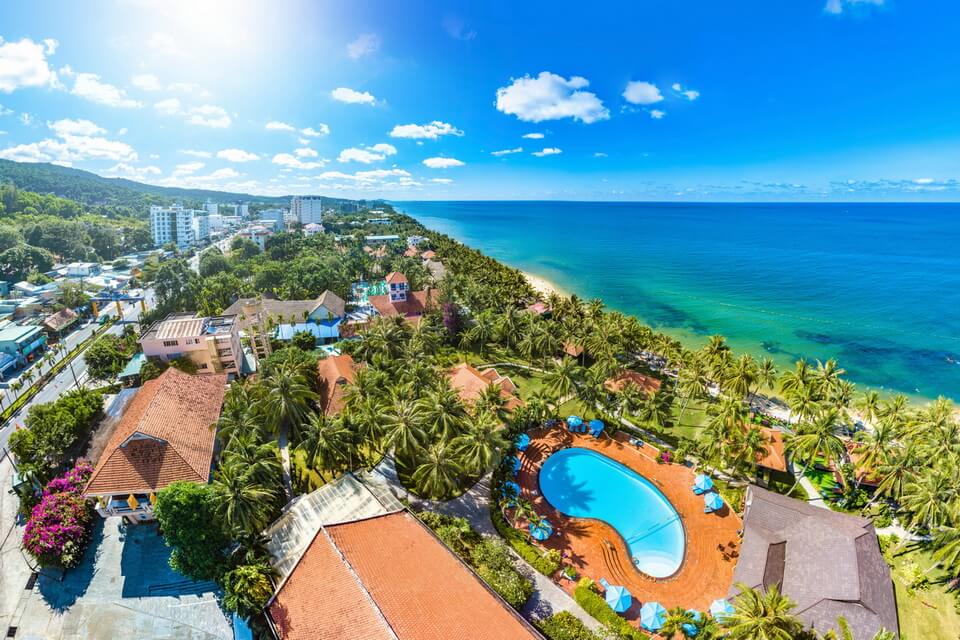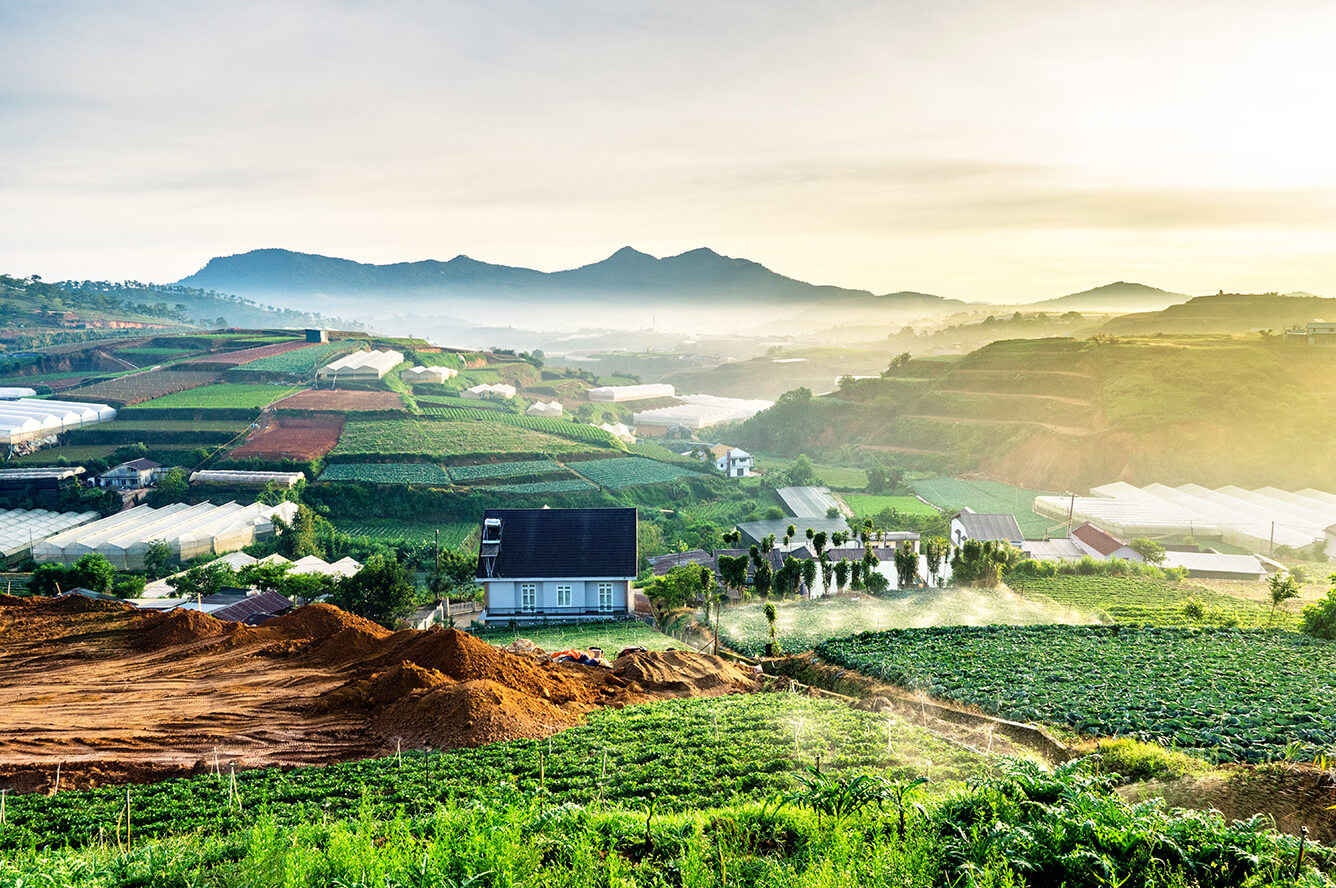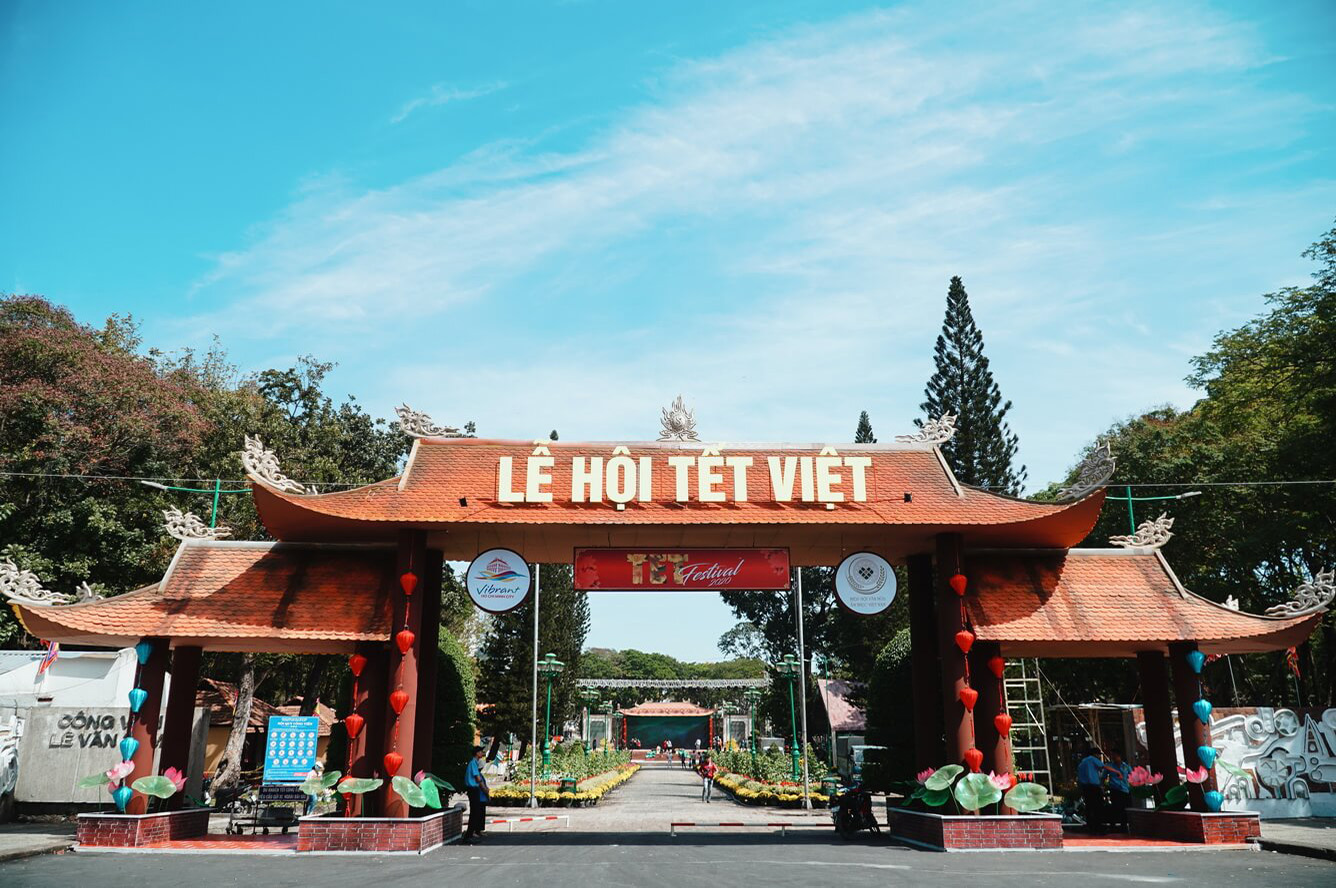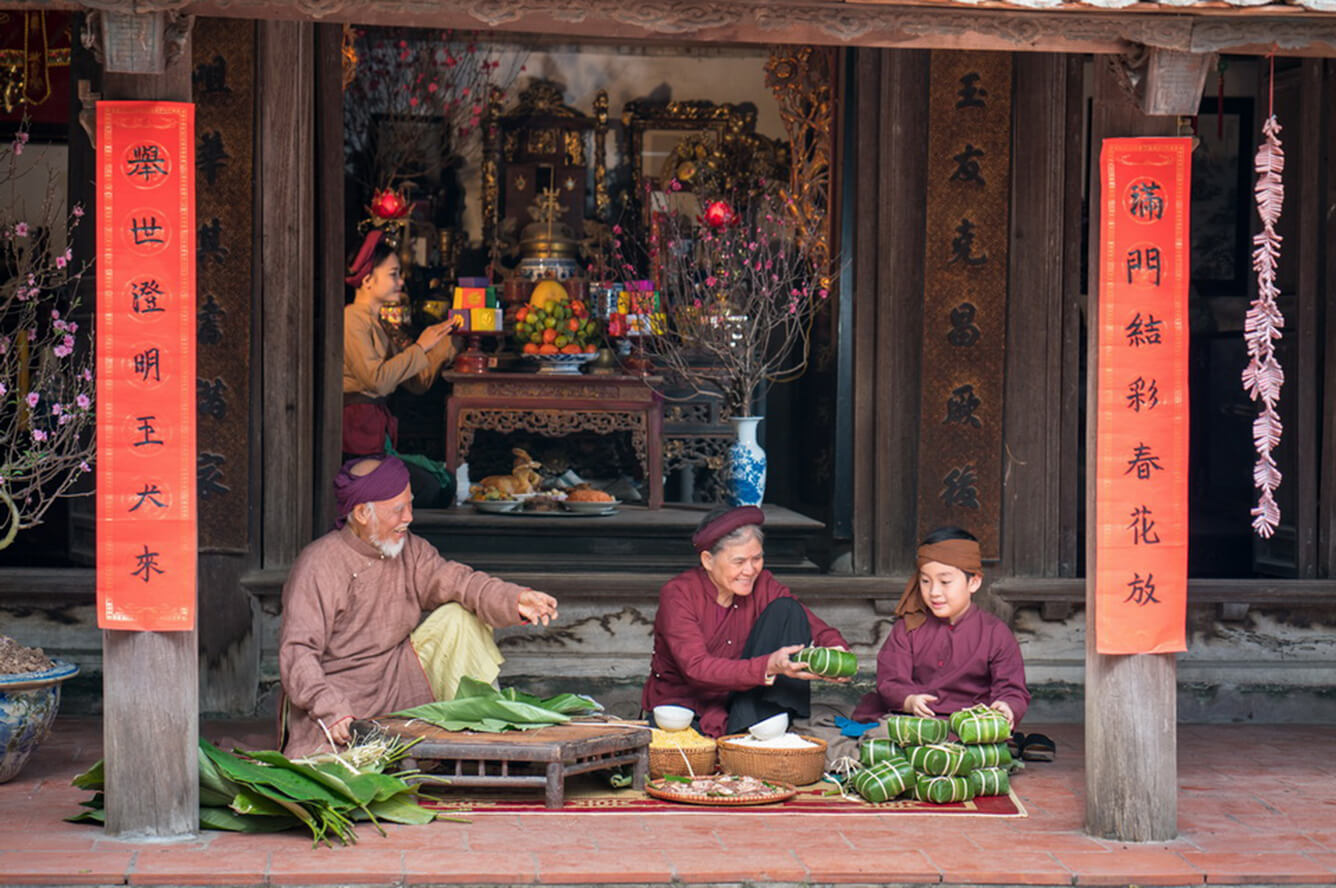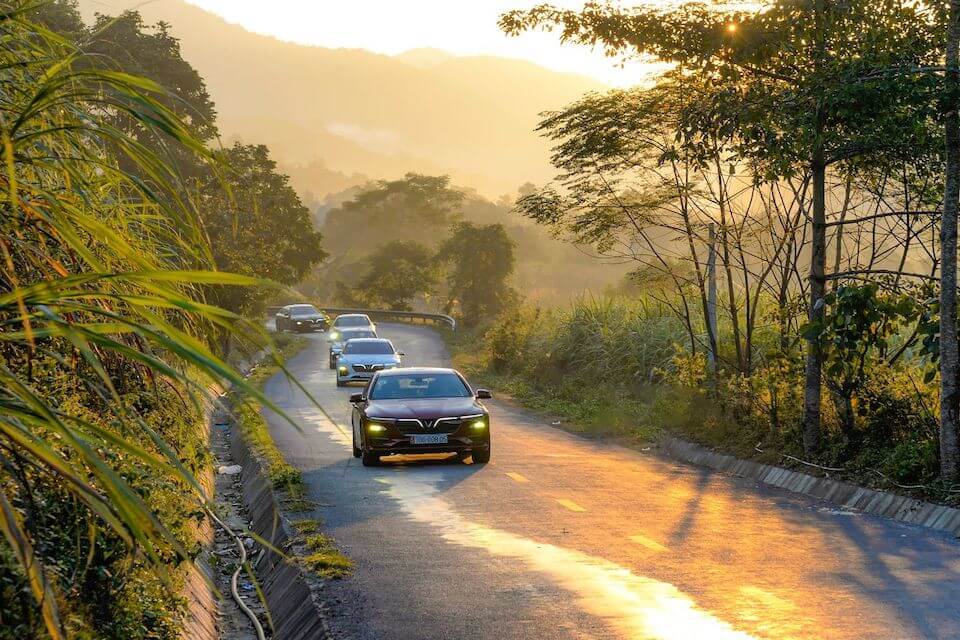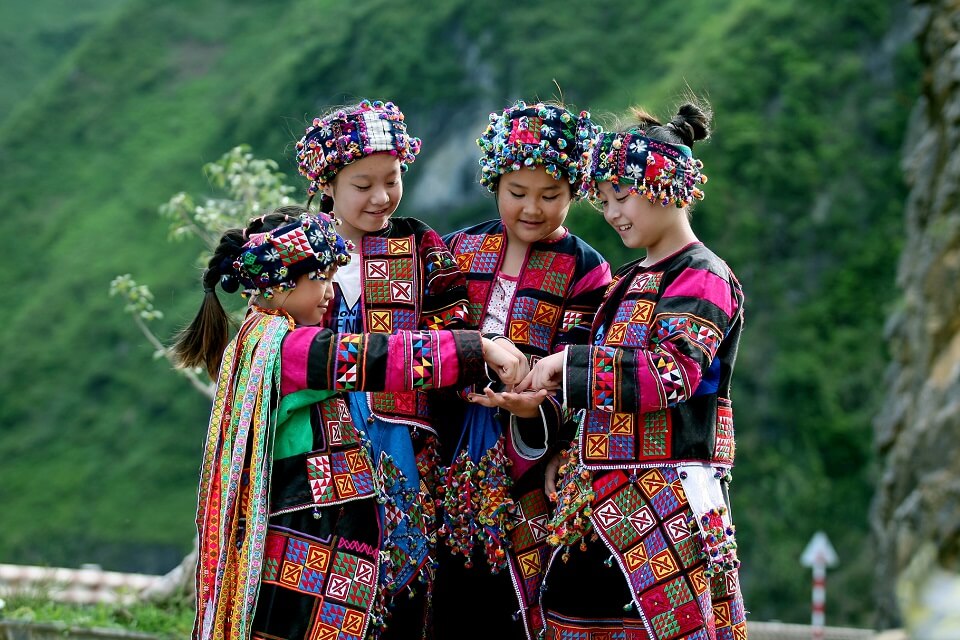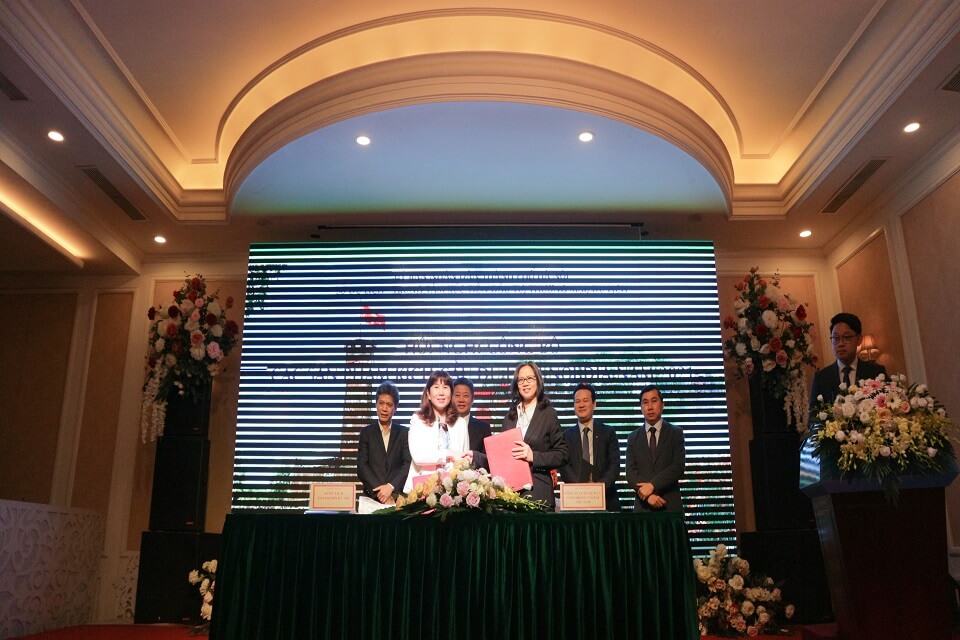All aboard Vietnam’s Reunification Express
A vital lifeline in war and peace, Vietnam’s 1000-mile long North-South Railway provides an all-in encounter with the country’s incredible beauty, people and history.
Mrs Bay, a well-preserved 64-year-old, whom I’ve bumped into on a stroll, bats away my concerns. ‘I hardly notice it,’ she says as the last carriage finally disappears, continuing to massage black hair dye into her scalp with plastic-gloved hands. Mrs Bay is a retired railway worker. Space in this teeming city is at such a premium that she counts herself lucky to have a centrally located home, despite its obvious hazards. ‘It’s fine for the kids, too,’ she says. ‘We just call them inside when the bell rings.’
The first southbound express leaves at 6am. Through the drizzle, the neon sign spelling out Ga Hanoi flames red above the central entrance. Propaganda posters remind you that, in spite of its astonishing commercial energy, this is still a communist country. The station has a Soviet flavour, as do the red, white and blue livery of the rolling stock, and the smart blue uniforms of the guards who check the tickets.
I eat the noodles and drink a syrupy coffee sweetened with condensed milk. Out the window, the concrete and stained masonry of the suburbs gradually gives way to banana trees and emerald paddy fields worked by solitary farmers in conical bamboo hats.
Three hours beyond Hanoi, I get out at Ga Ninh Binh. I’m headed to Van Long Nature Reserve, one of the country’s famous beauty spots, but I’ve decided to make a detour to visit tiny Mai Do village, a place that’s off the usual tourist itinerary, to meet the father of a friend.
‘It was extremely dangerous,’ Mr Phan adds. ‘The line between life and death was very narrow.’
I’m half-American and it’s strange to think that these two old men were once on the opposing side of a war in which members of my own family took part, but there seem to be no residual hard feelings. They wave farewell as I set off on the 40-minute drive to Van Long.
Vietnam has modernised rapidly in the years since the war. Hanoi and Ho Chi Minh are huge, sometimes overwhelming cities, but you don’t have to go far to find serenity and extraordinary beauty. Van Long Nature Reserve protects an area of huge limestone cliffs that jut out of tranquil, lily-choked canals. The high, weathered ridges are cloaked with dark-green foliage that looks like the habitat of some mythical creature. It’s not surprising that it was chosen as one of the locations for Kong: Skull Island.
That evening I catch the SE19 express south from Ninh Binh. It’s my first night on a Vietnamese train and my overwhelming impression is of the jolting physicality of the journey. The train swerves and judders, bouncing me in the bunk. I wake with the strange, but not unpleasant sensation of having been pummelled with a meat tenderiser. Outside, it’s finally light: soupy waterways, bright sunshine and paddy fields announce our approach to Hue.
The palace complex suffered badly during the Tet Offensive of 1968, when the North Vietnamese Army launched a surprise attack against South Vietnam and its American allies. But enough has been restored or remains intact to convey a sense of its former magnificence: the grand throne rooms, huge geometrical courtyards, shady groves and pools of fat carp. Along its columned walkways, photographs recall the last decadent years of the feudal rulers: a Chinese-influenced court where, even in the 20th century, officials in silk robes kowtowed to a monarch who kept a harem and eunuchs.
One of those officials was a man called Pham Ba Pho. He served both Bao Dai and his predecessor, the flamboyant, French-educated, lipstick-wearing Khai Dinh. His house, a 10-minute ride from the Imperial City, has been lovingly restored by his grandson and is open to visitors.
After a day dispensing imperial justice, Pham Ba Pho would pop home to smoke opium from a huge pipe carved out of an elephant’s tusk, hang out with his three wives, play chess, listen to music or drink and paint. ‘He said people think opium is bad,’ his grandson tells me, ‘but if you just smoke a little, it gives you long life.’
Seen as decadent and unjust, the last Vietnamese emperors sold out to the French and lost the support of their people, but the end of the dynasty also swept away a centuries’ old tradition of graciousness and aesthetic pleasure. A sense of it clings on in the design of Pham Ba Pho’s garden house and its interplay of water, brick, wood, tiles and beams.
It’s night when I board and pitch dark as we make our way through Hai Van Pass, following the sharp contours of the hillsides that overlook the sea. Dawn finally breaks as we draw in to Nha Trang, a popular coastal resort. There are another 12 hours to go and I feel a pang of envy towards the visitors who are disembarking for the beach. It’s become hotter as we’ve travelled south. The Annamite Mountains rise up steeply on our western side. Out the window, I watch the landscape roll sedately by: palm-thatched houses like islands in paddy fields, egrets perched by irrigation ditches, spiny dragon-fruit trees and coconut palms. In every town, battalions of scooters are penned behind the gates of level crossings while we pass.
Periodically, vendors wheel their trolleys through the carriages, making Vietnamese coffee to order from a concoction in a plastic bottle, selling biscuits, instant noodles and boiled ears of corn. I break up the journey with naps and unsteady walks along the length of the train. In the cheap, overcrowded carriages, exhausted travellers are dozing in the corridors, making it hard to pass. At lunchtime, I visit the dining car for noodles. On the table beside me, two members of the kitchen staff top and tail an enormous pile of green beans.
The train pulls into Ga Saigon just after 4pm. More than 20 hours of constant motion have left me feeling disorientated and slightly deafened. The faintly decrepit air of the station belies the fact that it is the gateway to a city of 10 million people, a metropolis that blends elements of its French past with vertiginous 21st-century skyscrapers and teeming street life.
Today, Ho Chi Minh City seems poised to become an Asian megalopolis to rival Seoul or even Tokyo. It’s still home to a lively Chinatown, and hawkers peddle tofu and low-cost snacks for its busy workforce, but luxury shops and shopping malls are multiplying. The city’s subway is due to be completed in 2019 and from the EON Heli Bar, on the 51st floor of the Bitexco Financial Tower, you see a city that appears to be growing before your eyes.
Against a mother-of-pearl sky, buildings are sprouting up in various states of completion. Some are framed with scaffolding, others ready for occupation are dotted with yellow bulbs. The city seems to stretch to the horizon. The street-level traffic chaos becomes, at this height, harmonious rivers of yellow headlamps and red taillights. The dark curve of the Saigon River marks the next stage of the hungry city’s expansion: the luxury developments of Diamond Island – promising a future very far from Uncle Ho’s dream of austere egalitarianism.
Before I leave Vietnam, I go back to Ga Saigon. There’s an hour before the next arrival and the station has an off-duty air. Behind the ticket desk, a wallchart shows the timetable of the Reunification Express. When I’d stepped off the train the day before, I’d wondered if I’d ever want to get back on again. Now, however, as I read the station names – from Hanoi to Ninh Binh, Hue, Saigon, the places I remember and the ones I slept through – I feel a sneaking regret that the journey is over. It’s like looking at a book I only skimmed and am now determined to read properly.
Source Lonelyplanet

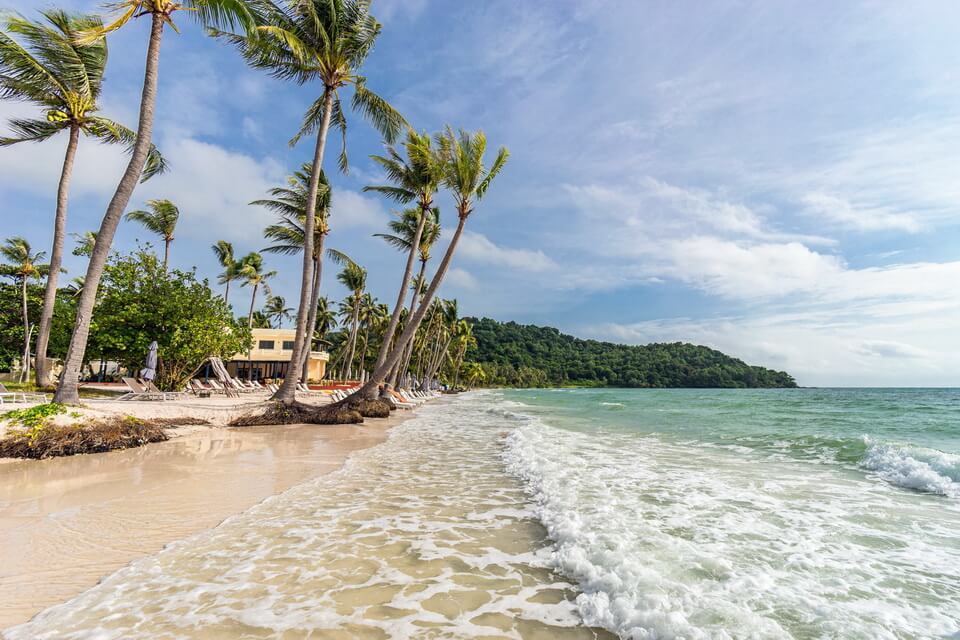
6 most beautiful beaches in Phu Quoc
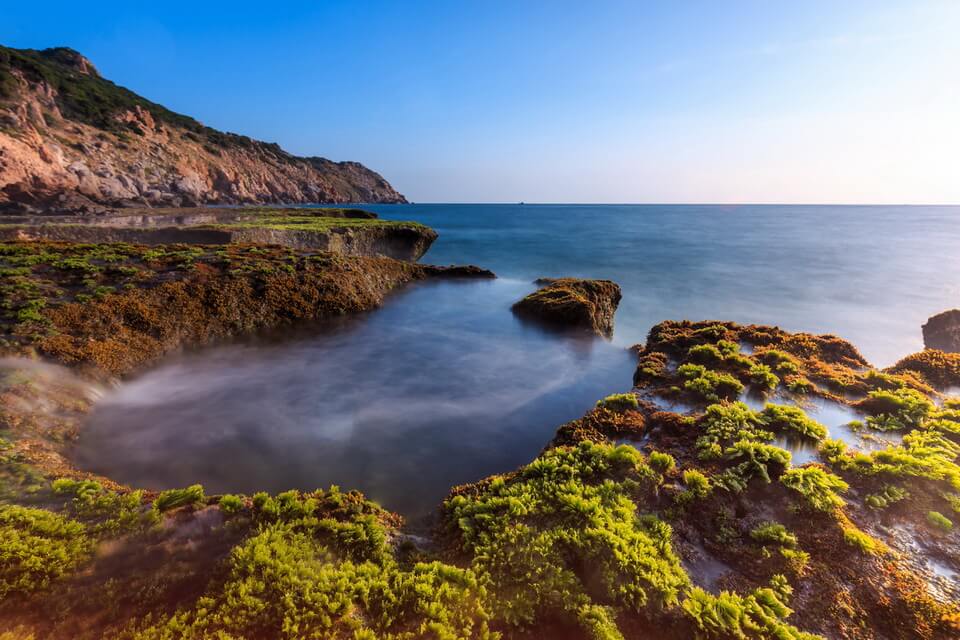
Chilling out at 5 sea paradises of the South Central Coast
Having your heart stolen in Quy Nhon
If you have never been to Quy Nhon, gone around or discovered emerald Ky Co, cool Eo Gio in the late ...
6 gorgeous sea paradises for summer travel
In the hot weather, you may just want to get away to the blue sea, immerse yourself in the refreshin ...
Luxuriously checking in at famous resorts in Phu Quoc
What motivates you every time you think of travel? To get some new experiences, to relieve stress, t ...
Enjoy 24 hours in Da Lat, Vietnam
Today, both foreigners and Vietnamese tourists love to visit Da Lat any day in the year for some coo ...
Tet and others spectacular festivals around the world in January 2020
In January 2020, Tet festival in Vietnam and others spectacular festivals around the world are color ...
Tet Nguyen Dan in Vietnam and best places to visit
Tet Nguyen Dan or Tet is the most important festival in Vietnam. It is the Vietnamese New Year marki ...







